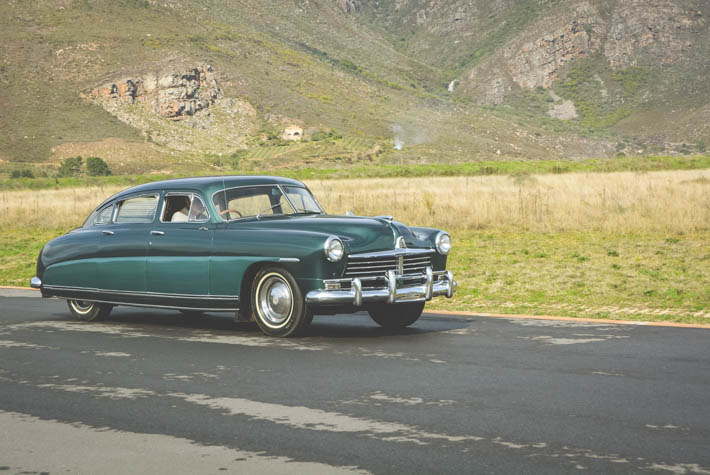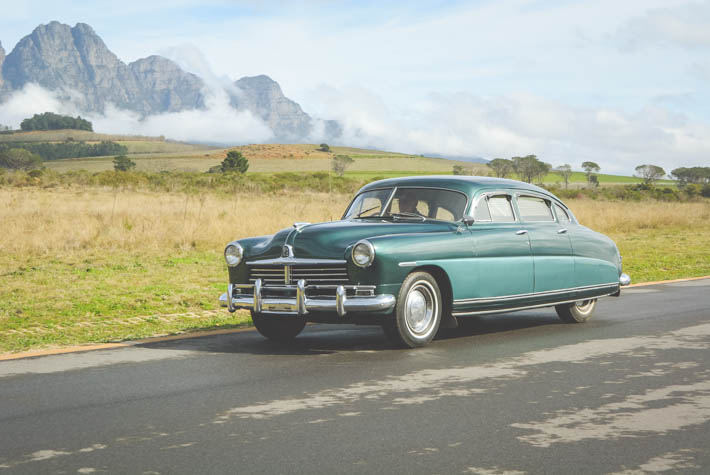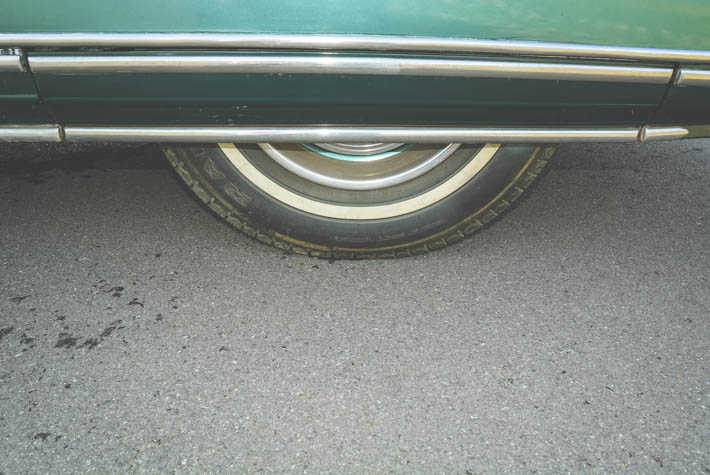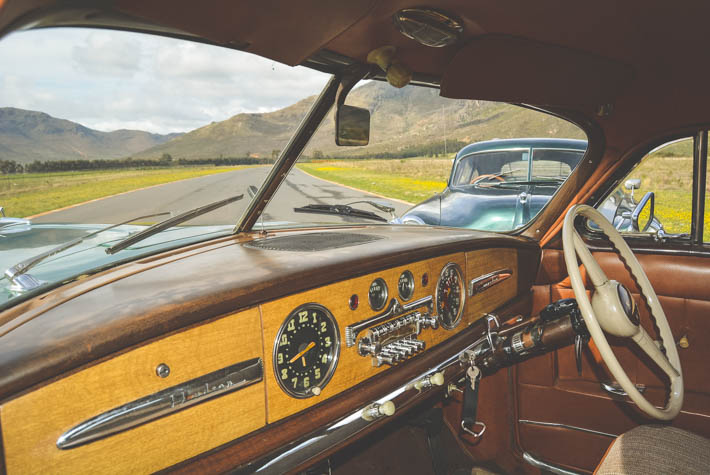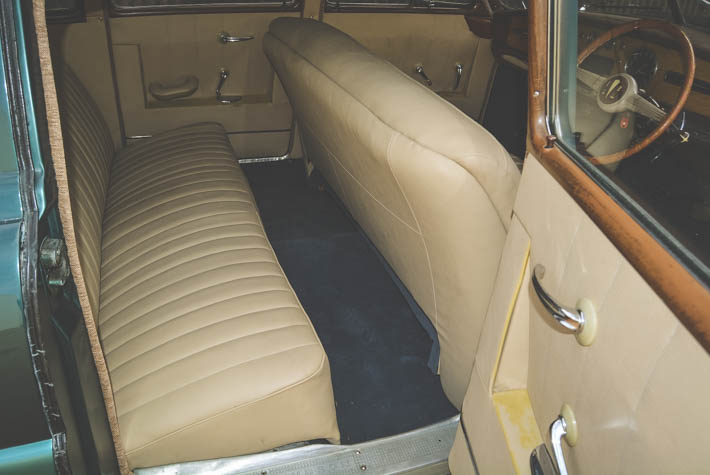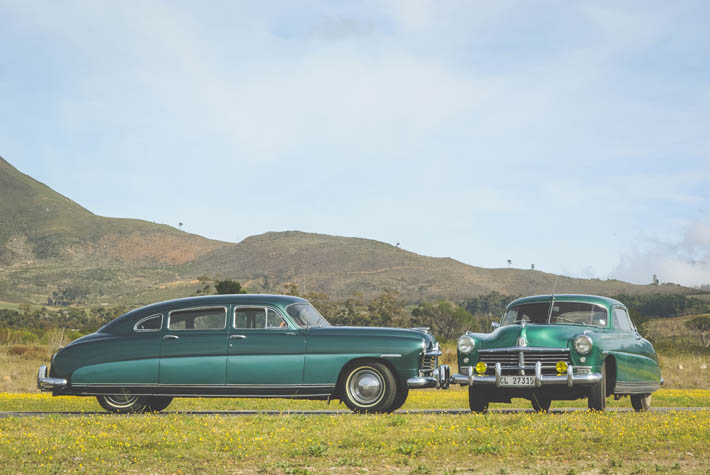
26 Aug Collection in Action – H
An alphabetical series of short driving impressions of some of the museum’s car collection. This month we follow Hollywood movie star Morgan Freeman behind the wheel of a Hudson Commodore.
Befitting its name, the Commodore was the flagship of the fleet in Hudson’s model line-up. Built in motor city Detroit, the first generation lasted only two years – 1941-42 – cut short as America became involved in WWII during which Hudson made aircraft and landing craft engines. Afterwards, having generated a small profit from its wartime effort, in1946 the company returned to motor manufacture with facelifted versions of the pre-war models. These cars were notable for having exterior and interior trim design input by Elizabeth Anna ‘Betty’ Thatcher, the first American female automotive designer. (To avoid a conflict of interests, Betty resigned in 1941 following her marriage to Joe Oros, then Cadillac designer.) The second generation also only lasted two years before its ground-breaking replacement appeared.
Often hailed as one of the great post-war designs, production of the unibody third-generation Hudson Commodore began in December 1947 and was made available in just three versions – a four-door sedan, a two-door Club Coupé and a two-door Brougham Convertible. All could carry up to six passengers. Engines on offer were the same as those for the lesser Super Six and Super Eight models, namely a 262 cu.in. (4 293 cm3) L-head in-line six and, oddly, a smaller, less powerful 254 cu.in (4 162 cm3) L-head straight-eight.
The car’s all-steel unibody design was quite radical for its time. Its construction incorporated a perimeter frame that allowed for the seats to be set lower than would be possible with the more common separate body/chassis assembly, so passengers ‘stepped down’ into the car, which became a catchphrase when referring to the design. Hudson actually trademarked the design as Monobilt. Apart from saving weight, the layout offered some side impact safety protection and lowered the car’s overall height and consequently the centre of gravity, which benefitted handling, a characteristic for which the car became universally acclaimed.
A narrow glasshouse, full length bodyside swage lines and spats over the rear wheels made the car appear exceptionally low and sleek. Sedans were 5207 mm long, 1 957 mm wide, 1 533 mm high and rode on a 124-inch (3 150 mm) wheelbase. In later years, the look appealed to hot rodders who often converted Commodores into lead sleds, a ground-hugging expression of automotive art that usually horrifies purists but thrills the California Custom Club.
Inside, seats featured foam cushions and sedans were trimmed in broadcloth while coupés boasted leather. Standard luxury features included a two-tone walnut-grained dashboard, instrument light dimmer, swivelling sun visors, electric clock, opening rear quarter-lights, and an 18-inch plastic steering wheel with horn ring. (The Super Series cars had a 17-inch wheel.)
FMM’s 1949 Commodore has the in-line six-cylinder engine that features a chrome-alloy block, a four main bearing crank, solid valve lifters, a 6,5:1 compression ratio and a Carter two-barrel carburettor. The motor delivered 95 kW at 4 000 r/min and 271 N.m of torque at a low 1 600, and was mated with a three-speed column shift manual gearbox. Top speed was around 150 km/h. When new, an aluminium cylinder head, an oil bath air cleaner, overdrive and different axle ratios were amongst numerous powertrain options.
A near identical 1949 Hudson Commodore sedan was one of the star cars in the Oscar-winning movie Driving Miss Daisy starring Morgan Freeman as the driver Hoke Colburn and Jessica Tandy as Miss Daisy. But perhaps Hudson’s more famous silver screen star was the lovable Doc Hudson in Pixar’s animated Cars movies, but he was actually modelled on a 1951 Hudson Hornet Club Coupé. Nevertheless, the similarities are obvious – the Hornet and Wasp briefly superseded the Commodore before the body style – which, surprisingly, was not a trendsetter – was dropped for the 1954 model year.
So, with my wife acting as Miss Tandy, I did my Hoke impersonation around the L’Ormarins estate and soon understood why FMM curator Wayne Harley is enthusiastic about the car. Tipping the scales at just over 1 600 kg, the Hudson is no sprinter but the motor feels – and is – strong. Thankfully, the big wheel is not too heavy to twirl when manoeuvring but such bulk needs consideration when pressing on along twisty roads. For sure, roll is hardly evident and looking through the split windscreen, the car exudes a kind of majesty when cruising along, the shallow windows adding an air of mystique to outsiders looking to see who is driving – and being driven.
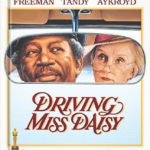 “What you say, Miss Daisy?”
“What you say, Miss Daisy?”
“Did you have the air-conditioning checked? I told you to have the air-conditioning checked.”
“I had the air-conditioning checked. I don’t know what for. You never allow me to turn it on.”
“Hush up!”
Great movie. Great car. MM
